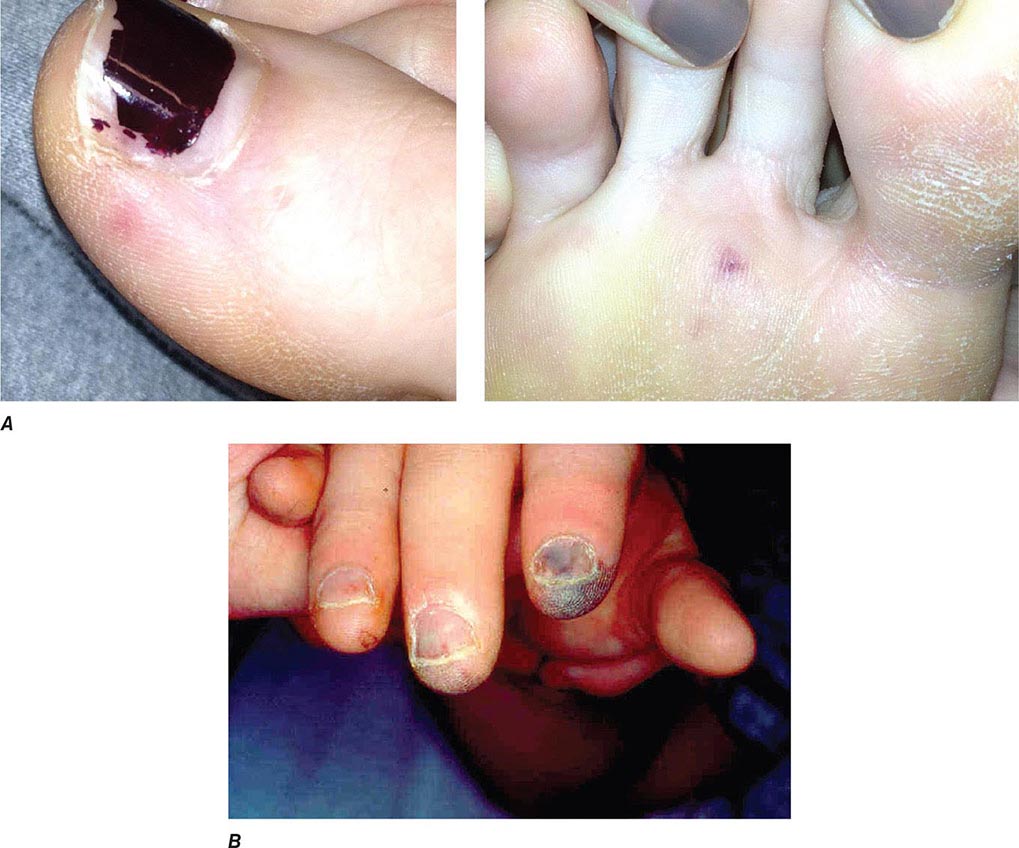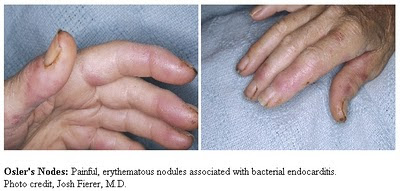

Sehr ähnlich sind Janeway-Läsionen der Unterschied besteht darin, dass letztere nicht druckschmerzhaft sind und eher an Handinnenflächen und Fußsohlen auftreten. Die Osler-Knötchen sind nicht zu verwechseln mit dem Krankheitsbild Morbus Osler. Sie heilen meist nach wenigen Tagen unter Schuppung aus.

Charakteristisch ist eine gruppenförmige Anordnung der oft zu Hunderten auftretenden Knoten. Sie treten insbesondere an Finger- und Zehenkuppen, sowie im Thenar- und Hypothenargebiet auf, aber auch an Armen und Beinen. Osler-Knötchen (benannt nach dem kanadischen Arzt Sir William Osler (1849–1919)) sind kleine subkutane, schmerzhafte, entzündlich gerötete, hämorrhagische Effloreszenzen (krankhafte Hautveränderung), die meist Zeichen einer Mikroembolie oder Immunkomplexvaskulitis im Rahmen einer infektiösen Endokarditis sind.

The inclusion into Osler's 1925 textbook came six years after Osler died. The term was first used by internist and pathologist Emanuel Libman, who reported the lesions in his paper of 1906 and explained his reasoning for using the term "Janeway lesions" in a footnote in 1923.
#Osler nodes skin#
Janeway lesions are named after Edward Janeway (1841–1911), a prominent American physician, pathologist and contemporary of Sir William Osler, who initially described "peculiar skin lesions" in some people with endocarditis, in a paper published in 1899. They may last days to weeks before completely resolving. Rarely, they have been reported in cases of Systemic lupus erythematosis (SLE), Gonococcemia (disseminated gonorrhoea), haemolytic anaemia and typhoid fever. They are not common and are frequently indistinguishable from Osler's nodes. Janeway lesions present as red, painless macules and papules on the palms and soles. Organisms may be cultured from the lesions. They are caused by septic emboli which deposit bacteria, forming microabscesses. Pathologically, the lesion is described to be a microabscess of the dermis with marked necrosis and inflammatory infiltrate not involving the epidermis. On the contrary, Janeway lesions are thought to be due to embolic phenomenon in cutaneous blood vessels of palms and soles which does not cause pain or least pain. Osler's nodes are thought to be due to immunologic phenomenon where deposition of immune complexes provoke inflammatory response, leading to swelling, redness and pain. The most significant difference between the two is that Osler's nodes present with tenderness, while Janeway lesions do not. Osler's nodes and Janeway lesions are similar and point to the same diagnostic conclusion. Janeway lesions are painless, frequently haemorrhagic lesions seen most commonly on the palms and soles, particularly on the base of the thumb and little finger, and seen in infective endocarditis.


 0 kommentar(er)
0 kommentar(er)
